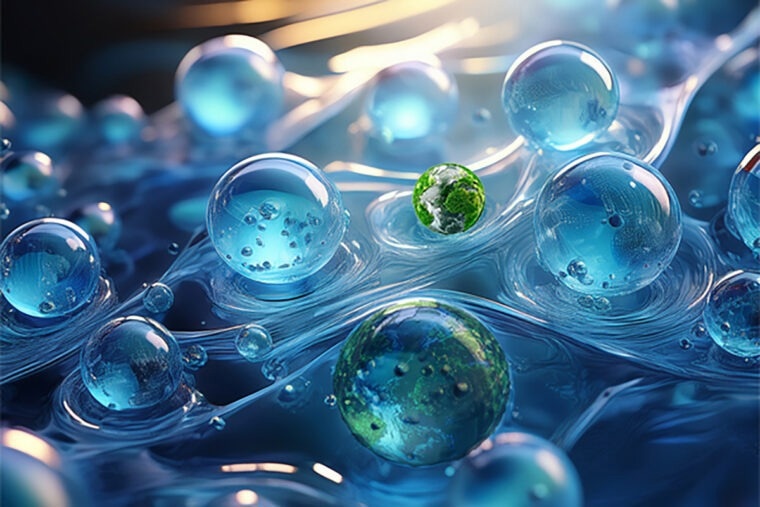Reviewed by Lexie CornerJun 13 2025
Engineers from Washington University in St. Louis’s McKelvey School of Engineering have developed a composite nanotechnology that extracts and recovers nutrients from wastewater. These nutrients can then be reused as feedstock for biorefineries or agricultural fertilizers. The process also helps lower the risk of toxic algal blooms.
 Young-Shin Jun’s lab developed a novel composite nanotechnology that removes and recovers nutrients from wastewater, subsequently upcycling them as agricultural fertilizers or as biorefinery feedstocks while simultaneously mitigating the occurrence of harmful algal blooms. Image Credit: Young-Shin Jun
Young-Shin Jun’s lab developed a novel composite nanotechnology that removes and recovers nutrients from wastewater, subsequently upcycling them as agricultural fertilizers or as biorefinery feedstocks while simultaneously mitigating the occurrence of harmful algal blooms. Image Credit: Young-Shin Jun
Excess nutrients in wastewater can lead to harmful algal blooms. These blooms have both environmental and economic impacts.
Professor Young-Shin Jun and Ph.D. student Minkyoung Jung developed mineral-hydrogel composites that can extract and recover ammonium and phosphate from wastewater.
The composites contain nanoscale struvite and calcium phosphate mineral seeds. These materials can reduce ammonia and phosphate levels by up to 60 % and 91 %, respectively. This helps limit algae growth and the release of related toxins.
A 2000 report from the National Oceanic and Atmospheric Administration estimated that toxic algal blooms in U.S. coastal waters cause annual economic losses between $33.9 million and $81.6 million. This underscores the relevance of the technology.
The hydrogel works similarly to the moisture-absorbing material used in disposable diapers. Jun’s team looked to natural processes for both inspiration and environmental benefit in their design.
We designed these hydrogel composites to recover ammonia and phosphate, essential nutrients whose overabundance causes algal bloom. Ammonia synthesis is energy-intensive, and phosphorus resources are dwindling. Our mineral-hydrogel composites allow us to harvest these nutrients from wastewater and repurpose them as fertilizers and feedstock for biorefineries.
Young-Shin Jun, Professor, Washington University in St. Louis
The method uses nanoparticle nucleation, where tiny solid particles begin to form in water. It's similar to how sugar crystals grow on a string when making rock candy.
To guide this process, Jun's team embedded ultra-small mineral seeds into a hydrogel. These seeds consist of calcium phosphate and struvite - a mineral made of magnesium, ammonium, and phosphate - that binds with calcium and other ions.
As ammonia and phosphate in the wastewater attach to the seeds, the hydrogel increases in size. During this process, the average particle size grew from 6.12 to 14.8 nanometers.
This approach addresses three major challenges in conventional nutrient removal: low collection efficiency, difficulty removing both ammonia and phosphate together, and inconsistent performance under different water conditions. It reduces nutrient levels to the point where algal blooms can be prevented.
Jun highlighted the method’s scalability. It has been tested with up to 20 liters of wastewater, and the team is now expanding to 200 liters.
“This demonstrates the practical application potential of our fundamental scientific research, showing a viable path from the laboratory to everyday technology. This pioneering work represents a significant advancement in environmental engineering, turning a waste problem into a valuable resource and exemplifying sustainability in action,” Jun added.
Jun worked with Washington University’s Office of Technology Management to patent the mineral hydrogel technology.
The study was funded by the U.S. Environmental Protection Agency and the U.S. Department of Energy.
Journal Reference:
Jung, M., et al. (2025) Molecular Insights into Novel Struvite–Hydrogel Composites for Simultaneous Ammonia and Phosphate Removal. Environmental Science & Technology. doi.org/10.1021/acs.est.4c11700.